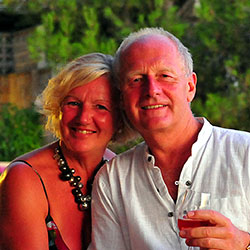It seems almost prophetic that the act of combining the two towns of Buda and Pest on November 17, 1873 also created two faces of a city that has become renowned as one of the most beautiful in Europe.
Whether it’s old and new, hilly and flat, art and architecture, conflict and peace, tyranny and freedom, independence and unity or culture and barbarity, Budapest provides a mesmerising dual insight into European history, visually charted at every turn in this grand treasure trove that sits astride the River Danube in Hungary.

Depending on how long you have and how active you feel, most of the most significant sights of Budapest can be covered on foot, with a couple of the others such as the Ecseri Flea Market and Memorial Park being a little further afield. Our long weekend is ideal to get a good insight into the character of this stunning city, which for us is reminiscent of St. Petersberg.
Its immediately obvious that there are two sides to Budapest; Buda on the western side of the river sits high upon a hill with its calm Castle District full of grand buildings and the historic, now tourist centre, of the city. Pest, the flat and busy side of the city, lies to the east of the river and charts much of the city’s turbulent past and modern buzzy present. Both are easily reached by crossing any one of the bridges, such as the historic Széchenyi Chain Bridge, offering immediate and distinct contrasts within the one city.
As well as Váci Utca (Vaci Avenue), which has been famous for its shops and promenade since the 18th century, in Pest you’ll find parks that overflow with attractions, the river with its pleasure boats and coffee shops stacked with the most delicious cakes – as well as numerous reminders off Nazi occupation, the Soviet era and uprisings against oppression that have visually scarred and soaked the city with the blood of hundreds of thousands in more recent times. Walking the streets and imposing squares is a journey through history that you can choose to immerse yourself in or simply acknowledge as a passage of time en route to more enjoyable pastimes.

Walk around Heroes’ Square and the grand Kunsthalle Art Gallery, past the fascinating monument to the 1956 Budapest uprising (featuring rusting columns representing people coming together until they fuse into one powerful shining force that eventually breaks away), amble back, or catch a rickety tram towards Andrássy Avenue with its beautiful painted building facades, the Art Deco sculpted relief of soviet workers on the disused Trade Unions building and the overbearing House of Terror – now a Museum documenting the effect of the Nazi and Soviet regimes in Hungary and memorial to victims.

You’re never far away from a contrast in Budapest and our enjoyment of the lively nightlife in Pest with its bars and restaurants is sobered by our evening walk along the Danube to stand beside the bronze shoes of those whose life was worth less than the leather they stood in – a memorial to the Budapest Jews who were shot by Nazi Arrow Cross militiamen between 1944 and 1945.
Our spirits are lifted once more as we stroll along to the Hungarian Parliament building that stands regally alongside the riverbank with views across to floodlit Buda and its Hapsburg Citadella; built after the suppression of the Hungarian Revolution in 1848, a fort that is now a symbol of the city.

There’s plenty to occupy you in Buda, from the Labyrinth of Buda Castle, the dignified and ornate Castle District, Buda castle itself, The Citadel, St Mathias Church with its incredibly coloured rooves and on to the Art Deco Gellért Thermal Baths, which are well worth going into.
Little antique shops give an insight into times past and tempt you to seek out the eclectic flea markets that dot the city. Whatever else takes your attention, the wonderful views across the city from here are sure to captivate you.

Whilst in Buda you can extend your visit by taking a taxi to Monument Park, if deposed Soviet statues displayed in their final resting place are of appeal for their historic or sculptural significance.
Whatever your desire then the jewel that is Budapest will fulfil it. It’s an architectural gem, an eclectic mix of baroque, neo classical and art nouveau buildings and overall a stunningly grand and elegant city.


Budapest is easily reached by a short flight from anywhere in Europe. Its unique character will stay with you forever. Here are a few links to help you discover Budapest for yourself.











































